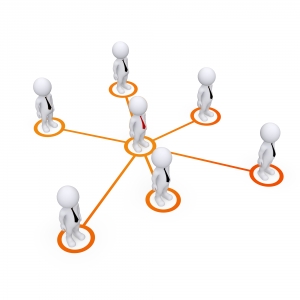
Effective Cooperative Learning Strategies
With the advent of new learning systems, freeing everyone from the tedium and misery of traditional classroom learning models, training has taken on a new life, and one in which it is much less maligned. So many new models, such as cooperative learning, have come around and proven much better for everyone involved. But, people find cooperative learning strategies mystifying for some reason.
As we’ll explain in another piece soon, cooperative learning is just organizational learning with a focus on the social aspect as a priority. This means that for the most part, it doesn’t call for any special thinking with strategies.
Same Old Thing:
Yeah, cooperative learning strategies aren’t that unique, though I suppose in the case of cooperative models, you’ll tweak your organizational strategies to play along with that uniquely increased focus on social interaction and teamwork.
A Bit of the New:
One thing that’s actually a good idea to do is to inject a little spice into this with some slightly new thinking. Cooperative learning, at its core, is cooperation among students to learn off of and teach one another, balancing each individual’s strengths and weaknesses.
This is fantastic, but if you bring in some flipped classroom approaches to handling teacher role and hierarchy, it will flow better and more naturally. Confidence will be higher, just knowing you are there to back them no matter how weird it gets.
Along with improved confidence and flow, your dynamic, variable role also means that you can better implement gamification, which is a splendid strategy for cooperation.
A True Gamified Model:
So, let’s look at the model we can get from this new stuff augmenting a cooperative model.
Those familiar with old tabletop games such as Dungeons and Dragons will recognize the role of the “DM”, the arbitrator who tells the story, controls the enemies and obstacles, and enforces these rules on the players.
Well, now you can do this in your training. Gamification in mass use right now isn’t a deep application of it, it’s just a steeper competitive flipped classroom.
That’s good and all, but gamification is about more than just skinner box engagement. It’s about making it engaging and fun, an actual game. So, you can be creative, set up a world with a story to tell, with a goal that can be achieved only by the students cooperatively learning together and helping one another through it.
In stead of grades, they have levels and skills, and in stead of tests, they are confronted with enemies. I’ve seen this done, and it works magnificently. The secret’s the flipped classroom role of the teacher, so they can be that game operator and arbitrator.
Other Strategies:
There are some other strategies out there, because any organizational model strategy can work in cooperative learning just fine, as long as it’s tweaked to focus on the cooperation appropriately.
So, I just saved you a whole lot of time searching for cooperative learning strategies by making you aware of that, because I sure wasn’t. On top of that, we have this awesome new kind of gamification I mentioned above to play with now. When training becomes an exercise of creativity and engagement, everyone’s happier.

